Testbed
Motherboard: MSI P45D3 Platinum ( Provided by : MSI );
Processor: Intel Core 2 QX9770 Extreme edition na 3.6GHz ( Provided by : Intel );
Memory: Corsair Dominator 12800 7-7-7-24 ( Provided by : Corsair);
HDD: WD VelociRaptor 300G 10,000RPM ( Provided by : SmoothCreation );
Our tables feature results from the GTX 280 card overclocked to GTX 285’s speeds, and we marked them as GTX 280 OC. We reviewed the Inno3D a few of days ago, and you can find more details here.
Futuremark Test
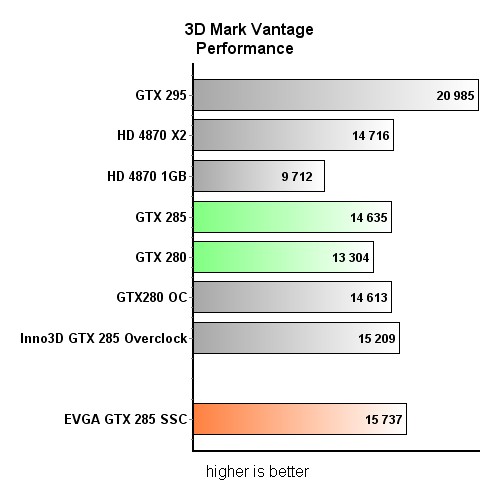
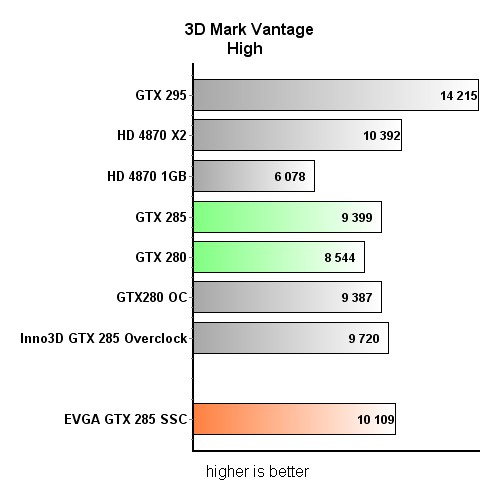
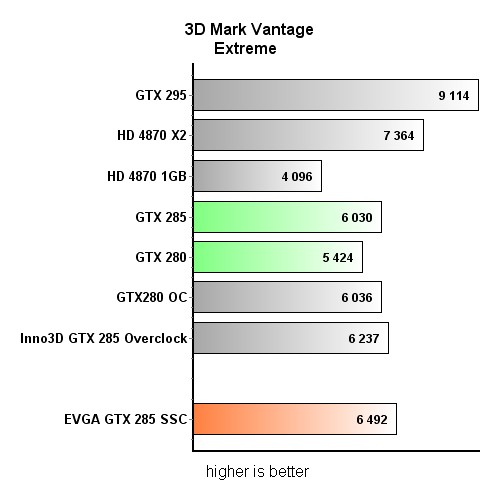
EVGA fares well in Vantage tests and it beats the reference GTX 285 by about 7.5%, whereas the old GTX 280 loses by 20%.

3DMark 06 test shows minimum difference among the GTX 285 cards. Compared to the GTX 280, on the other hand, the results still end up higher by about 4%, whereas EVGA’s SSC card scores 5.3% better results.
Gaming
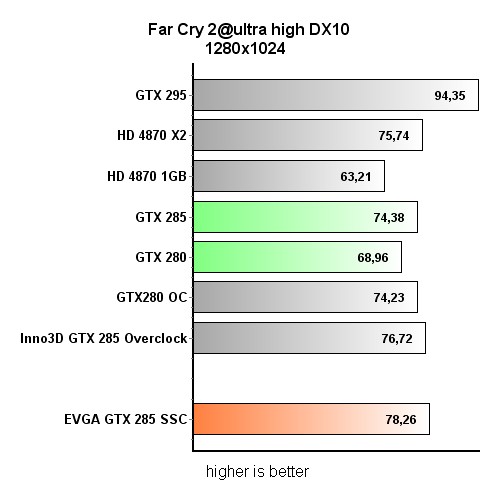
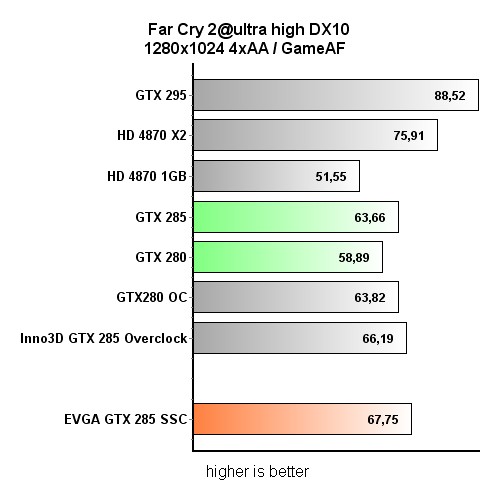
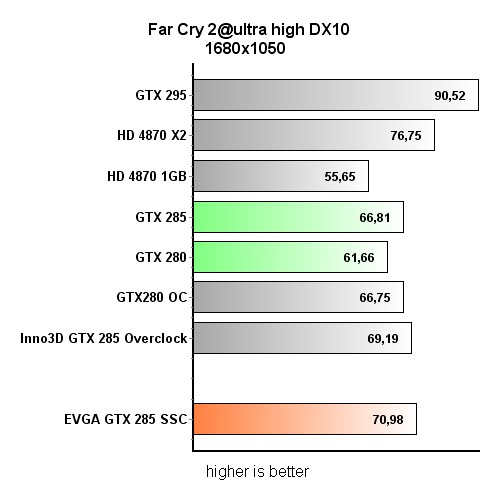
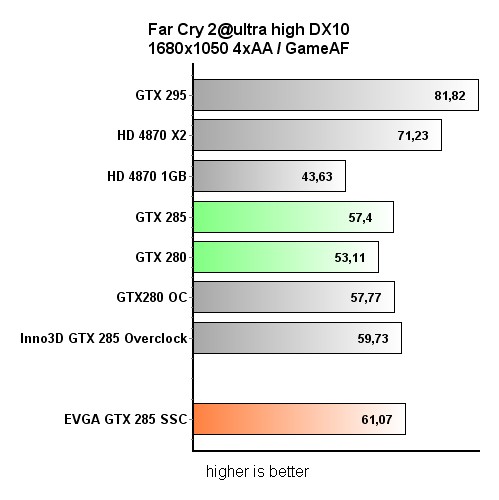
When the filters are on, the GTX 295 and HD 4870 X2 leave the pack and beat the GTX 285 by 42 and 24%, respectively. The same 1680x1050 resolution sees the GTX 285 outperforming the GTX 280 and HD 4870 1GB by 8 and 31%. It runs on par with the overclocked GTX 280, whereas EVGA scores over 60fps at 1680x1050, which clearly shows what this card is capable of.
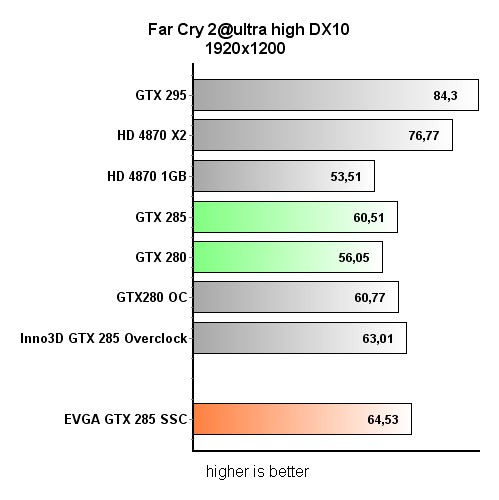
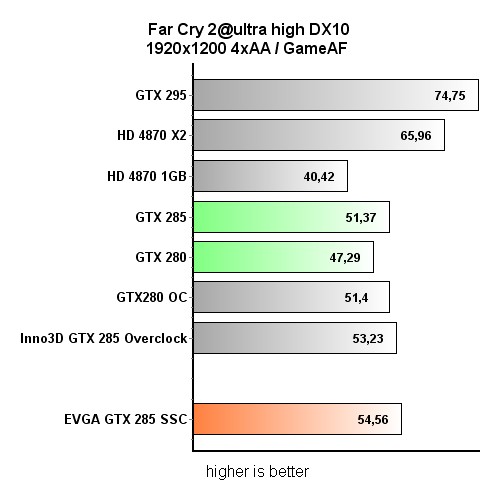
At 1920x1200, GTX 295 and HD 4870 X2 beat the reference GTX 285 by 39 and 27%, respectively. The GTX 285 outperforms the HD 4870 1GB and GTX 280 by 13 and 8%, whereas the overclocked GTX 280 results again end up identical. EVGA is about 6% better than the reference GTX 285 and 15% better than the GTX 280.
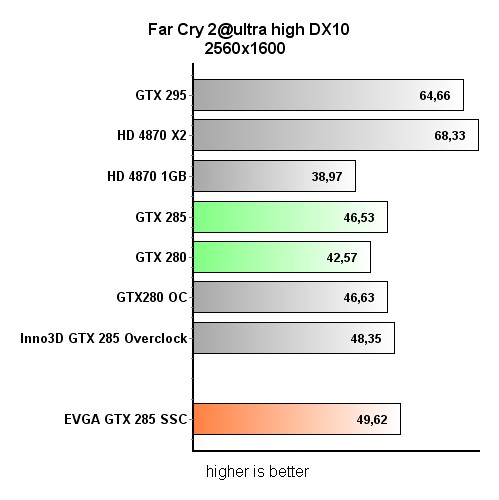

After turning the filters on, the GTX 295 and HD 4870 X2 end up faster than the GTX 285 by 45 and 28%, and the GTX 285 leaves the HD 4870 1GB and GTX 280 behind by 27 and 8%, respectively. The overclocked GTX 280 still runs on level terms with the reference GTX 285.
Here we see EVGA’s GTX 285 SSC trashing the HD 4870 1GB by over 50%, and it outruns the reference GTX 285 by almost 7%.
World in Conflict


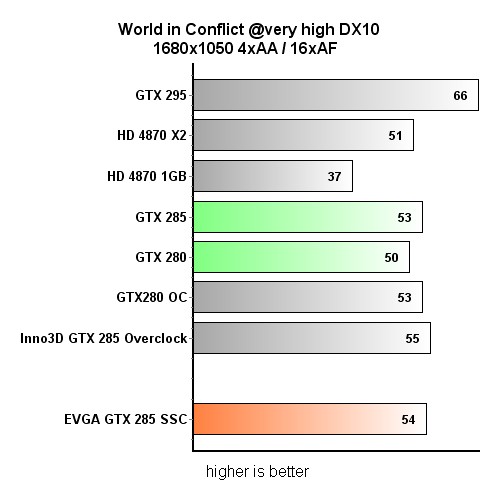
In this game, only at the higher resolutions we see the difference between EVGA’s SSC card at 702MHz and the reference GTX 285 at 648MHz.
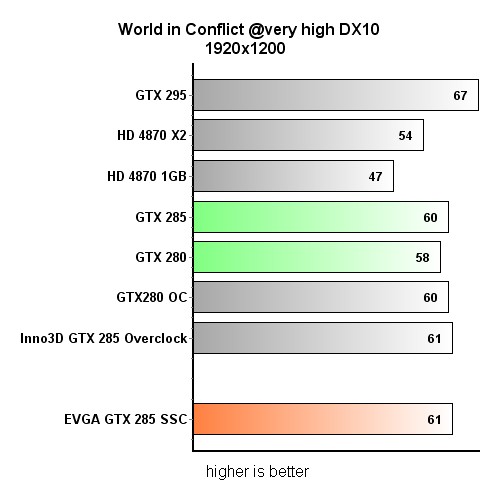
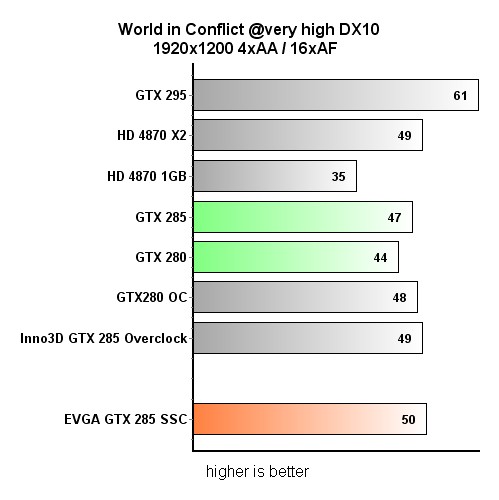
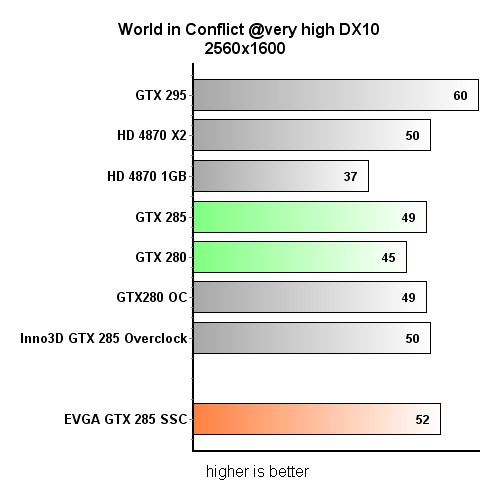
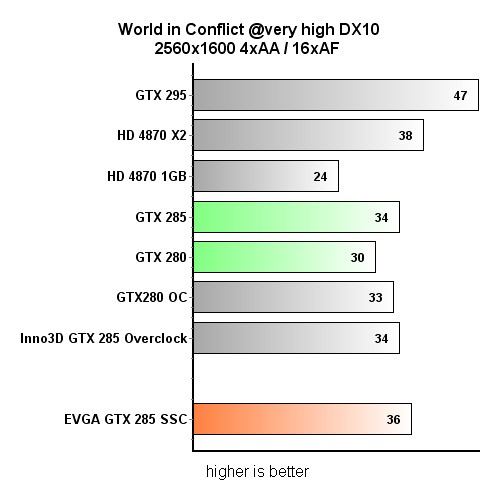
At high resolutions, EVGA GTX 285 SSC card shows that it’s not planning on letting go of its 6% advantage over the reference GTX 285 and almost 20% advantage over the GTX 280.
Overclocking
Like we expected, overclocking the SSC card is a piece of cake. Pushing it up to 740MHz is no tough task, but higher speeds require better GPU cooling. At SSC speeds, the GPU hit 83 degrees Celsius, whereas overclocking it to 740MHz resulted in temperatures of 87 degrees Celsius. Idle operation results in temperatures of 41 degrees Celsius.
Our test rig, containing the GTX 285 SSC, consumes 309W, whereas the reference GTX 285 card brings these figures down to 280W.
In idle mode, EVGA’s card downclocks to 300MHz just like on the reference card, and we measured the consumption of 103W.
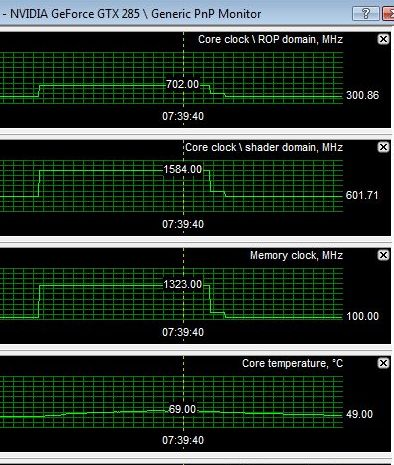
Talking about power consumption, EVGA’s GTX 285 SSC is far more efficient than the GTX 280, since it consumes 10-15W less while operating at much higher clocks.
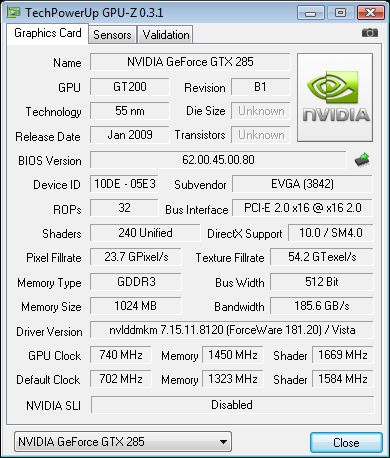
The following tables have OC suffix next to EVGA’s GTX 285 SSC, meaning that we further overclocked it.
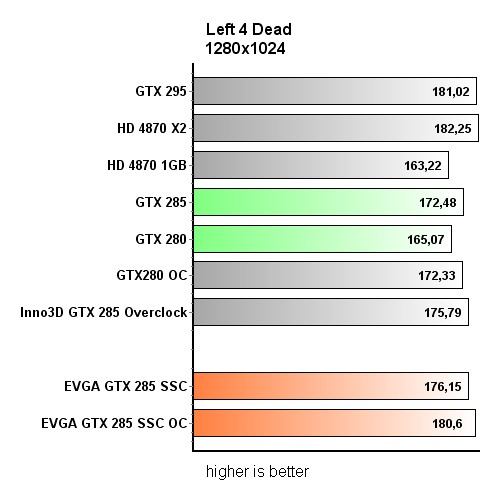

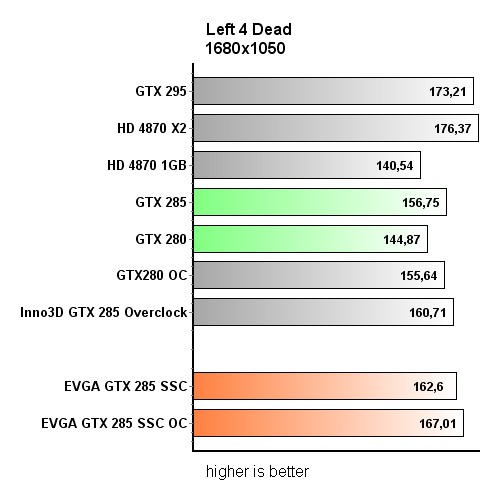
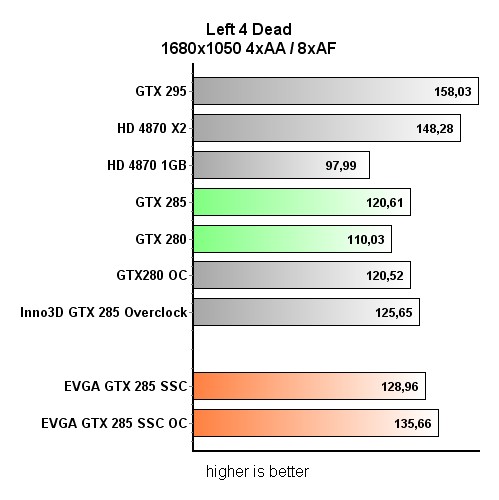
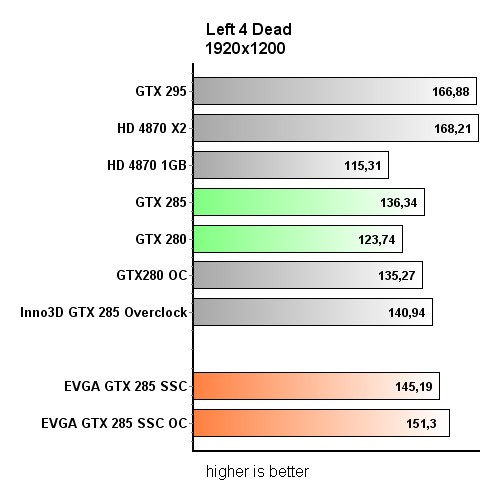
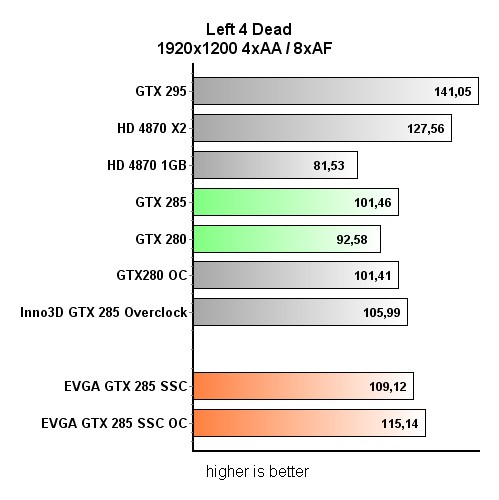
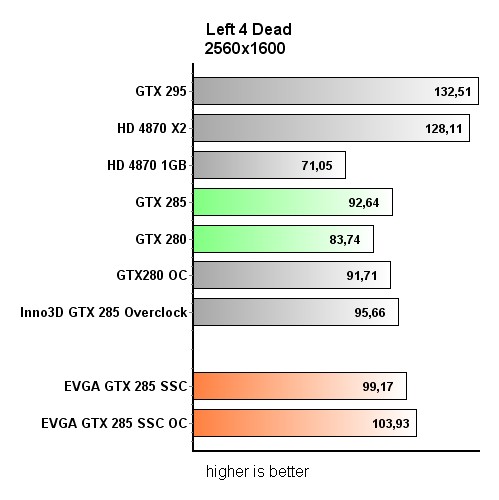
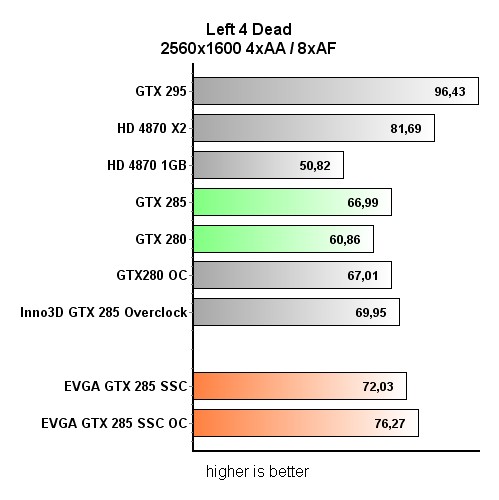
An overclock of 5.4% helped us to about 6% better results and the advantage over the reference GTX 285 jumped to 25%.
Conclusion
The new GTX 280 is called the GTX 285. The GT200 graphics processor is now built in 55nm, which led to significant improvements on the fields of consumption and higher clock performance. GT200 basically didn’t change during the transition from 65nm (GTX280) to 55nm (GTX 285). However, the shrink enabled higher reference speeds and while the GTX 280 runs at 602MHz, the GTX 285’s reference speed is 648MHz.
EVGA jumped onto the overclocking wagon with their Super Super Clocked GTX 285 card, and the name suggests that this card received a significant boost. GTX 285 SSC’s GPU runs at 702MHz, the memory at 1323MHz (2646MHz effectively) and the shaders at 1584MHz.
The GTX 285 is one of the best single-chip Geforce cards, and only the recently announced EVGA GTX 285 FTW has enough muscle to beat it. EVGA GTX 285 SSC packs 240 stream processors, enabling excellent gaming as well as CUDA-supported application performance, which uses the GPU to process data. PhysX is also a part of the deal that you get with Nvidia Geforce 8th and 9th generation cards.
Overclocking resulted in EVGA having the upper hand compared to the reference GTX 285, but the difference is also notable when compared to the GTX 280, which loses to the SSC by as much as 20%. Although this card features great gaming and multimedia potential, the GTX 280 owners will find the main reason for the upgrade to be lower consumption.
The card now needs two 6-pin power connectors (unlike 1x6pin + 1x8pin on GTX280) and has a TDP of 183W. In the best case scenario, it will consume up to 53W less than the GTX 280, whose TDP is 236W.
The only downside is the €50 price difference between the GTX 280 and GTX 285 cards. EVGA GTX 285 SSC will provide pleasant gaming at all resolutions, but it will set you back about €400. On the other hand, if you want the fastest single-GPU card Nvidia can offer, then the GTX 285 SSC is the card you’re looking for.
